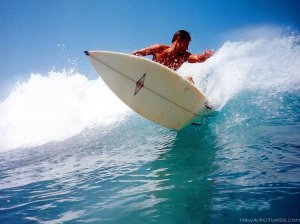
Sailing ulu in Guna Yala
I took three hours of my free time to fulfill a desire I had since the very first moment I arrived in Guna Yala. Everyday, you can see the shapes of Gunas on their sailing ulu, setting sail at the first light in the morning and heading for the fishing destinations or to the mainland.
This image always inspired me a deep sense of freedom and satisfaction and an intense desire to sail one.

Cayuco is the name the Spanish explorers gave to the dugout canoes built by indigenous people of the Antilles and other American regions. It describes a monohull with flat bottom and no keel or daggerboard, propelled and steered by a wide paddle. In Guna language it is called “Ulu”, or “urmor”, ù but they often use the name cayuco, at least with non-Gunas like me.
Cayucos are built with the dugout technique: this means that the hull is shaped by carving a log of suitable dimensions, usually mahogany which grows in the well preserved forest of the Comarca (indigenous territory) . Similar to other canoe designs the bow and stern are pointy, and have a streamlined skeg, that help them tracking in the water.
Looking at the bilge you notice the rough marks left by the tools during the chipping out. It is remarkable how Guna shipwrights can obtain such a regular shape with this method and the amount of labor behind every single piece must be enormous.
In Guna Yala cars are useless and the transportation happens on water. Cayucos are everywhere, and sometimes it is hard to find docking to the main piers. They come in very different size and dimensions, every family has at least a small paddle one, but sailing cayucos are longer and more expensive. The modernity brought outboard engines and fiberglass boats named “pangas” or the more common spanish name “lancha”.
The cayuco Dino and I sailed is owned by one of his cousin. The man told me that it was built from a tree donated by his father. When his father died he had the permission to cut the tree and have it carved and painted.
On the sailing ulu the rig is a spritsail (similar to an Optimist): the mainsail is attached with a loose foot to a boom, and the “sprit” is a spar that support the leech. The main is sheeted to a hole through the gunwale and tied with a simple knot. The boat comes also with a headsail which is set flying from the bow to the mast head. The simplicity of the construction is a demonstration of how little techonology is really needed to sail. Even if a lot can be done to improve the performance of this system, it is enough for the essential living of the Kunas, and I am still amazed about how good it is the windward performance without a centerboard. You just need to be equipped with a lot of patience, a skill which Kunas culture is rich of.


The rudder is substituted by a wide paddle, called cammi. In fact, the helmsman can be very much called a paddler as you need to paddle the boat into the wind in order to tack. It took me a while to understand how to steer the sailing ulu with a wooden paddle and the fuzzy wind of the afternoon was not helping, but it was nothing too complicated. There is definitely a more close feeling of how the rudder operates and the forces that act on it using this technique rather than turning the wheel of a performance cruiser.

As often happens during fishing trips, especially the ones you improvise, we didn’t catch any fish. Nonetheless I had an interesting day on a sailing ulu, I learned about traditional crafts and fulfilled a little dream of mine. I hope I am going to do it again, next time I hope with a bigger sail, just to have more speed sensation and capsizing danger.
